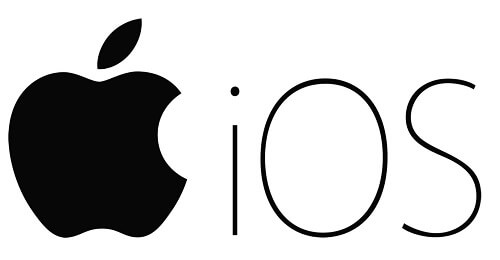History Of The Apple IOS Operating System
The iPhone, crafted by Apple, has emerged as one of the most popular smartphones globally over the past decade. It has become the preferred choice for many individuals around the world.
Powering the iPhone is the iOS operating system, exclusively designed by Apple for use in iPhones and other Apple devices.
Unlike other operating systems, iOS is proprietary to Apple, and the company does not permit its use by other manufacturers. This exclusivity contributes to the premium pricing of iPhones compared to average smartphones.
In this article, we will explore the various iOS versions that have been developed since the inception of the iPhone.
IOS 1
Certainly. Here’s a refined version of your passage:
The inaugural version of iOS, released by Apple, made its debut on June 29, 2007. The final version was subsequently released on July 15, 2008.
Packed with features, this version included a camera, calendar, photos, Safari browser, notes, phone, mail, iPod, videos, music, and more.
Additionally, it was compatible with the iPod Touch, establishing the foundation for subsequent iOS iterations.
IOS 2
The second version of the iOS operating system was initially released on July 11, 2008, with the final version arriving on January 27, 2009. Apple concluded support for this OS in 2011.
This iteration marked a significant milestone as it was the first to introduce third-party applications.
It boasted several additional features compared to its predecessor, including text, the App Store, settings, calculator, weather, stocks, maps, iTunes, and more.
The inclusion of third-party applications expanded the functionality and versatility of iOS during this phase.
IOS 3
iOS 3, the third installment in the iOS lineup, was unveiled on June 11, 2010, with its final version released on August 11, 2010. Apple concluded support for this iOS version in 2012.
This iteration introduced significant features, including the ‘Spotlight’ and ‘Search’ indexing features, designed to facilitate easy information retrieval for iPhone users.
Building on the features of its predecessor, iOS 3 also added new functionalities such as YouTube and Voice Memos.
Notably, users could now record videos and utilize the ‘copy and paste’ feature.
IOS 4
Following swiftly after iOS 3, iOS 4 was released on June 22, 2010, with its final version becoming available on July 25, 2011. Apple discontinued support for iOS 4 in 2013.
This version introduced notable enhancements, including the ability to create folders on the home screen and an increased limit on displayable apps.
New features encompassed spell check functionality and improvements to the camera, Safari browser, and home screen, contributing to an enhanced user experience.
Key features of this IOS are
- Multitasking
- AirPrint
- iBooks
- Airplay
- Facetime
- Personal hotspot
IOS 5
In response to the burgeoning growth of cloud computing, Apple introduced iOS 5, a revamped operating system that brought forth a myriad of new features.
Notably, iOS 5 was the first to incorporate iCloud capability, showcasing Apple’s commitment to cloud-based services.
The introduction of the Newsstand feature and the debut of Siri, Apple’s virtual assistant, were also noteworthy aspects of this release.
Notable features are
- Imessage
- iCloud
- notification center
- wireless syncing
IOS 6
Certainly. Here’s a refined version of your passage:
iOS 6 made its debut on September 19, 2012, with the final version released on February 21, 2014. Apple concluded support for this version in 2015.
Key features introduced in iOS 6 included Passbook, Apple Maps, and the ‘Do Not Disturb’ functionality.
IOS 7
Certainly. Here’s a refined version of your passage:
iOS 7 shifted its focus to the user interface, introducing a host of features including Airdrop, CarPlay, Touch ID, Activation Lock design, Control Center, and more.
It was initially released on September 18, 2013. This version marked a significant visual and functional overhaul of the iOS user experience.
IOS 8
iOS 8 was initially released on September 17, 2014, with the final version made available on August 13, 2015.
Notably, Apple continues to support this operating system. The introduction of key features such as Spotlight, Continuity, Apple Pay, iCloud Drive, Family Sharing, Handoff, and support for third-party keyboards marked significant advancements in iOS functionality during this phase.
IOS 9
The 9th edition of iOS was released on September 16, 2015, bringing significant improvements over its predecessor.
New features introduced included Low Power Mode, Night Shift, and the initiation of the Public Beta Program. Notably, Apple continues to support this operating system to date.
IOS 10
iOS 10, released on July 19, 2017, brought significant changes, including the incorporation of 3D Touch and enhancements to the lock screen.
The image recognition capabilities of iOS 10 garnered praise from reviewers. Noteworthy features of this release included iMessage apps and the ability to delete built-in apps.
The final version was released on September 13, 2016, and Apple continues to provide support for this operating system.
IOS 11
The next iteration of the Apple operating system, iOS 11, was unveiled on September 19, 2017, introducing significant customization and interoperability features.
Notable enhancements included a display option on the lock screen, the introduction of AirPlay 2, and augmented reality capabilities.
It’s important to note that iOS 11 is still actively supported by Apple.
IOS 12
The IOS 12 is the latest version of the mobile operating system from Apple and it was released on 17th September in 2018. It came with several key features such as,
- Grouped notification
- Group facetime
- 70 emojis
- Battery improvement
- Arkit 2.0
- QR code
- Screen time
- Apple tv
- Portrait mode that has been updated
Conclusion
In summary, these represent the various iterations of the Apple iOS operating system developed over the years. We invite you to share the current iOS version running on your iPhone in the comments section below. Your insights are valuable to us.







